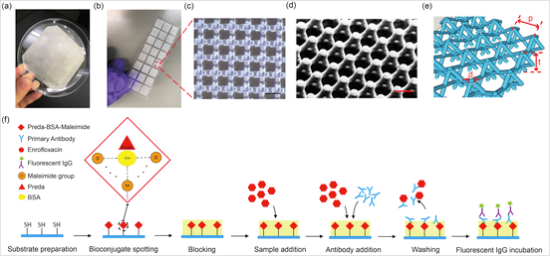Synthetic paper for fluorescence bioassays
In a collaboration with CSIC in Barcelona, Spain, researchers from KTH Micro and Nanosystems have now demonstrated that their "synthetic paper” porous micropillar scaffold material allows superior detection of biomolecules. The results are published in the journal Biosensors and Bioactuators .The Synthetic paper has lower autofluorescence or results in a lower limit of detection compared to glass and nitrocellulose substrates. Using synthetic paper-based microarrays, we detected the antibiotic enrofloxacin in whole milk at levels below EU safety regulations.

This work was performed by PhD student Weijin Guo under the supervision of Professor Wouter van der Wijngaart .
#antibiotic #enrofloxacin #microarray #ELISA #medicaldevices #biomedical #biomedicalengineering #diagnostics
